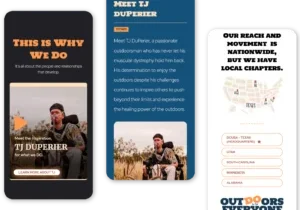Making Your Case Studies Irresistible
Share this article.
A friend was adopted when adoptions were closed, meaning she could never know her biological mother or father--a story to make Ancestry irresistible.
The importance of great content–the difference between selling and failing
So simple, yet so hard. Tell the story. Tell your story. But, how?
I’ve read some great ones recently. I aspire to write so well.
The Compelling Case Study
Ted Leonhardt wrote “Setting a mood with a case study”. Captivated from the beginning, I read as he set the scene by describing the sounds and lights. He set the pace with his writing–how many words and where he put the punctuation. He addressed the struggle–the gritty situation. Then, the heroine appeared.
How can we write case studies like this on what we think are mundane?
How can we reframe these experiences? Or, can we simply step back and examine what was going on around us that may have influenced us and contributed to the outcome in some way?
The Internal Case Study
I read an article about on-boarding new employees. It was equally compelling. It equally sold me on the culture of the company, which has influenced my perception of the brand as a whole and its and service.
Phoenix Normand wrote about his experience at Square in his article “Onboard me! F**K!” His experience didn’t simply make him feel comfortable about his new job, it made him excited about his career, created instant connections so he wouldn’t feel like an outsider, and fostered a real commitment to the brand. That, my friends, is why the internal culture is so important to the brand. It’s not just the face and outside experiences, it’s the loyalty and belief in the brand from the staff that breeds real brand champions.
Phoenix’s experience at square inspired him to write a compelling story about his experience with the brand from a different perspective. It’s another great example of how to use a compelling case study that compels your potential clients to talk to you/consider you for their next project.
Telling Emotional Stories
A friend of mine was adopted from a family in a time when adoptions were closed, which meant that she could never know who her biological mother was, which also meant she could never know her biological father either. (Don’t worry! She has a wonderful mother and father, so it’s not like she’s missed anything in life.) We see stories similar to hers where long-lost [genetic] relatives are found and sometimes reunited. They’re exciting and sweet!
Ancestry and its new competitors are becoming popular with this generation to reconnection with those from who we’ve been physically separated. It’s hard to say if the growing interest in this is from the availability of the new service or from the ads featuring such a service.
Adweek recently published an article about “How Ancestry Became a Best-Selling Amazon Product by Highlighting User’s Emotional Stories“. You’ve probably seen these compelling spots on TV and on the web. They are interesting. Some are fun; some are tearful; all are emotional. They’re moving in a way that many ads aren’t.
Ancestry “asked people about their preconceived notions about both their nationality before showing them their own results…which differed from what a person expected, an eye-opening look at how misguided people’s prejudices can be.”
How can we write like this?
Maybe we’ll outsource it to a great writer. Or, we can take classes. I am encouraged to take a class after reading another article from Ted Leonhardt. This article is about his own anxieties of taking a class. Yes, even the great, seasoned pros take classes!
Next Step
I already know of two case studies that have a great back story, which I didn’t include. My goal is to rewrite those into a compelling case study that shows how stressful it was for the client, how deeply we dove into her life and business, and how we developed a new brand, a new strategy, and a new visual mark to represent her new stage in life…and business.







